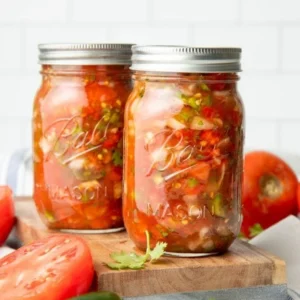Bechamel sauce, also known as white sauce, is a classic French staple that has made its mark in kitchens worldwide. Its smooth, creamy texture and mild flavor make it a versatile base for many dishes. Whether you’re layering it in a lasagna, drizzling it over vegetables, or using it in creamy pasta dishes, this sauce elevates any meal.
Originating from France, bechamel sauce is one of the five “mother sauces” of classical French cuisine. Its simplicity—consisting primarily of butter, flour, and milk—belies the depth of flavor it can bring to a dish. It’s popular for its neutral flavor, which makes it an ideal vehicle for adding additional seasonings or other flavors like cheese, mustard, or herbs.
Ingredients
To make bechamel sauce, you’ll need the following ingredients:
-
2 tablespoons of unsalted butter
-
2 tablespoons of all-purpose flour
-
2 cups of whole milk (for a richer sauce, use heavy cream)
-
Salt and pepper (to taste)
-
A pinch of nutmeg (optional, but highly recommended for extra warmth)
Possible Substitutions:



-
Dairy-free: Use plant-based butter and non-dairy milk (like almond or oat milk) for a dairy-free version.
-
Gluten-free: Swap the all-purpose flour with a gluten-free flour blend or cornstarch (use half the amount of cornstarch).
-
Low-fat: Opt for skim milk instead of whole milk for a lighter version.
Step-by-Step Cooking Instructions
-
Melt the Butter:
In a medium saucepan, melt the butter over medium heat until fully melted and bubbling. Be sure not to let it brown. -
Add the Flour:
Stir in the flour, whisking constantly to form a smooth paste. This mixture is called a roux. Continue to cook for about 1-2 minutes, stirring frequently, to eliminate the raw taste of the flour. -
Add the Milk:
Slowly pour in the milk, whisking vigorously to prevent lumps from forming. Keep whisking as the sauce thickens, about 4-5 minutes. -
Season the Sauce:
Once the sauce has thickened to your desired consistency, season with salt, pepper, and a pinch of nutmeg, if desired. -
Serve or Store:
If the sauce becomes too thick, add a little more milk to reach your desired consistency. The sauce is now ready to use in your favorite dish!
Common Mistakes to Avoid:
-
Lumpy Sauce: Be sure to whisk the roux constantly when adding the milk, as this will ensure a smooth sauce.
-
Burning the Roux: Avoid cooking the flour for too long—just 1-2 minutes to cook out the raw flavor is enough.
Pro Tips and Cooking Techniques
-
For Extra Smoothness: Use a fine mesh strainer to strain the sauce before using it. This removes any residual lumps and guarantees a silky texture.
-
Flavor Variations: Experiment with adding grated Parmesan cheese or Dijon mustard for extra flavor. For a richer sauce, add a dollop of heavy cream.
-
Consistency: If you’re using bechamel as a base for a cheesy sauce, such as in mac and cheese, keep it a bit thicker. For a creamy pasta dish, you might prefer a thinner sauce.
Variations and Customizations
-
Vegetarian Bechamel: The traditional recipe is already vegetarian. To make it even more exciting, add sautéed mushrooms or spinach for added texture and flavor.
-
Cheese Bechamel: Add 1 cup of shredded cheese (Gruyère, cheddar, or Parmesan) once the sauce has thickened for a creamy cheese sauce.
-
Herbed Bechamel: Try infusing your sauce with fresh herbs such as thyme or rosemary. Simply add them during the milk-pouring stage and strain them out before serving.
Serving Suggestions
Bechamel sauce pairs wonderfully with a variety of dishes, including:
-
Lasagna: Spread layers of bechamel in your lasagna for a creamy contrast to the meat or vegetable layers.
-
Grilled Vegetables: Pour over roasted or grilled vegetables like broccoli, cauliflower, or carrots for a rich addition.
-
Pasta: Stir into pasta for an indulgent, creamy texture. Top with fresh herbs or grated Parmesan for an extra touch.
Nutritional Information (Approximate per serving)
-
Calories: 120
-
Protein: 3g
-
Carbohydrates: 8g
-
Fat: 8g
-
Fiber: 0g
-
Sugar: 4g
(Note: Nutritional values may vary depending on the specific ingredients and portion size.)
Frequently Asked Questions (FAQs)
1. How do I prevent my bechamel from getting lumpy?
Whisking continuously while gradually adding the milk helps prevent lumps. It’s important to whisk vigorously as you pour in the milk.
2. Can I make bechamel sauce in advance?
Yes, you can! Bechamel sauce can be made ahead of time and stored in the fridge for up to 3 days. Simply reheat on the stove with a splash of milk to return it to its creamy consistency.
3. Can I freeze bechamel sauce?
Yes, you can freeze bechamel. Allow it to cool completely before transferring to an airtight container. It can be stored for up to 3 months. Reheat gently on the stove.
Closing Thoughts
Bechamel sauce is a must-know for any home cook. Once you master this simple, versatile sauce, you’ll open the door to countless dishes that call for creamy, rich sauce. It’s a great base for creativity—add your favorite ingredients, experiment with spices, or top it with cheese! The possibilities are endless. Enjoy making your bechamel sauce, and don’t forget to share your results with friends or ask for tips if you need help.



